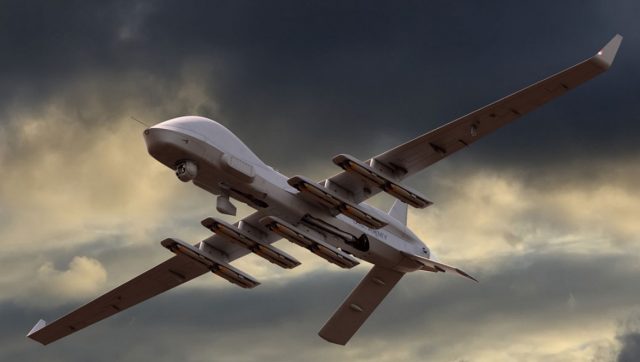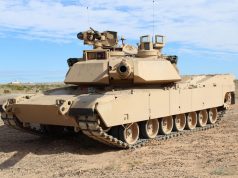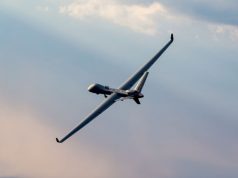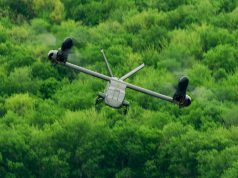A General Atomics Aeronautical Systems Inc. (GA-ASI) MQ-1C Gray Eagle Extended Range unmanned air system (UAS) was directed by a soldier with a tablet in a recent demonstration.
The company-funded technology demonstration at Yuma Proving Grounds, Arizona, showcased enhanced situational awareness and targeting capability for ground forces.
On April 23, a Joint Terminal Attack Controller (JTAC) controlled the electro-optical/Infrared (EO/IR) sensor on a Gray Eagle and call for direct and indirect fire on an array of targets.
The JTAC was able to see GE-ER video, aircraft location, and sensor field of regard using a tablet-based Android Team Awareness Kit (ATAK) and a TrellisWare TW-950 TSM Shadow radio.
JTACs are service members responsible for directing combat aircraft in close air support roles from a forward position. In the GA-ASI demo, a JTAC was able to send digital ‘Call for Fires’ to request artillery support, and a digital 9-line for close air support with the push of a few buttons.
The Gray Eagle autonomously re-routed its flight path to provide the sensor data that the JTAC requested without commands from the UAS operator.
“GA-ASI remains committed to advancing technology that provides maximum situational awareness and lethality to the warfighter,” said GA-ASI president David R. Alexander. “The JTAC’s use of the ATAK tablet, while teamed with the Gray Eagle ER, enables rapid situational awareness and engagements, which addresses one of the Army’s top priorities.”
GA-ASI said the demo showed that the JTAC’s ability to orient Gray Eagle sensors on targets from an ATAK tablet reduces man-in-the-loop errors and increases targeting speed.
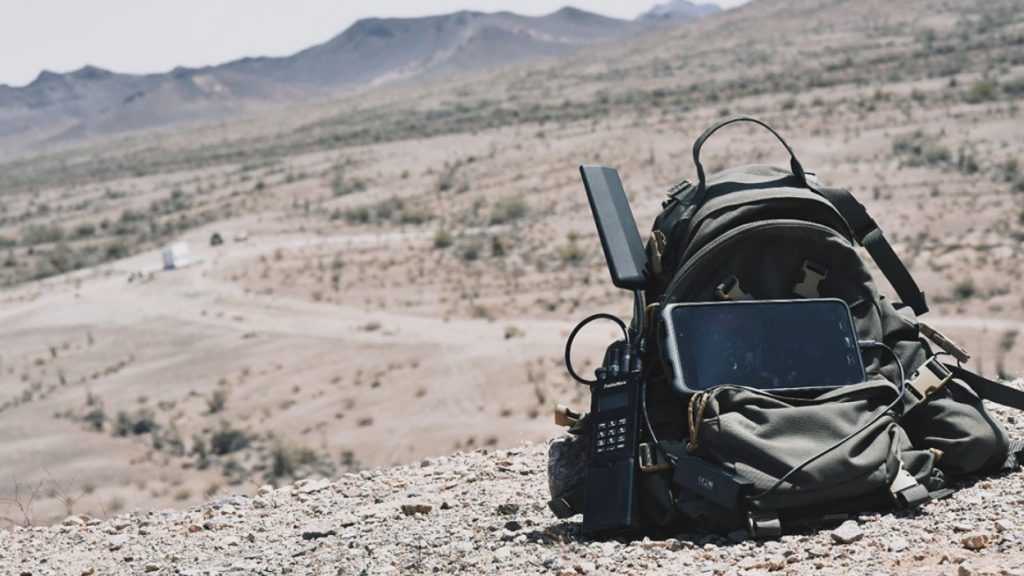
This demonstration follows a series of demonstrations that began in November 2019. Previous demonstrations included the integration of long-range ISR payloads and Air Launch Effects (ALEs). The launching and controlling of ALEs from Gray Eagle could potentially increase the survivability and effectiveness of current and future manned aviation systems with intelligence, targeting, communications, jammers, decoys and kinetic effects.
As the largest operator of the MQ-1C, the US Army is looking to improve its performance through the integration of payloads for joint all-domain operations. In a request for information in December last year, the service called for market input on synthetic aperture radars, moving target indicators, electronic intelligence and other AISR payloads for the Gray Eagle.
The ultimate goal would be to allow the Gray Eagle to to support Long Range Precision Fires (LRPF) systems with the help of long-range sensors and ALEs.

















